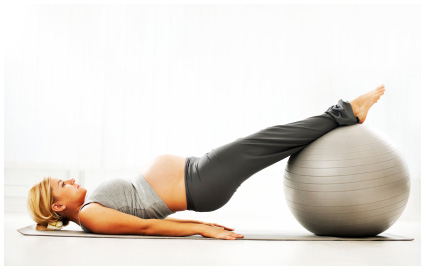Exercising during Pregnancy
Exercising during pregnancy can benefit your body by keeping your heart and muscles strong while relieving the basic discomforts of pregnancy (such as constipation, bloating and swelling, back pain and achy legs). Not only regular exercise bolsters energy levels and also keeps your spirits lifted and the muscles you’ll be using during delivery will be stronger.
Most doctors agree that it’s safe to partaking in a moderate exercise. However, if you’ve been sedentary, pregnancy is not the time to jump into a rigorous workout regimen. In this case, start slowly and ease your way into a regular routine.
Whatever your fitness level, here are some important guidelines to keep in mind when staying active throughout your pregnancy:
- Cardio: Try to avoid exercises that involve bouncy or jerking motions; these can put strain on your loosening joints. Stick with low-impact activities such as walking, swimming, water a erobics, biking, and low impact aerobics. Extend your warm up and cool down time from 5 minutes to 10-15 minutes.
If you’re doing Project: YOU, start with the Foundation workout and listen to your body’s cues. As you progress, you can always follow the modifier for a less intense version of the move. If you’re not doing Project: YOU, you may want to try my Pregnancy workout and even if you’re on the Project: YOU program, you may want to look at my Pregnancy video to find important information about your pregnancy. It also includes helpful information on how to get back in shape after pregnancy (with special emphasis on your abs). However you choose to move, be sure to listen to your body and stop exercising when you feel fatigued; don’t exercise to the point of exhaustion. Remember, this is not a time to strive for higher fitness levels.
- Gauging Intensity: Previously, theAmericanCollege of Obstetricians & Gynecologists (ACOG) and theAmericanCollege of Sports Medicine said a pregnant woman’s maximum hear t rate while exercising should be between 140 and 150. But in the last couple years, a more individual guideline has been adopted because of the variety of heart rate ranges found in pregnant women. According to the newer guideline, a pregnant woman should be able to easily pass the “talk test,” meaning she can hold a conversation while exercising.
- Strength Training: When it comes to strength training, modify your workout as needed. If you find that lifting weights puts strain on your back, knees or other joints, try using less weight. If you’re doing Project: YOU, you can reduce the amount of weight you’re lifting and follow the modifications for a less version of the move.
- Lying on Your Back: After the first trimester, avoid doing exercises in the supine position (lying on your back). You can modify sit-ups by performing them as you lie on your side, or check out my Pregnancy video for another alternative that involves kneeling down on all fours. If you’re doing Project: YOU, put the Pilates workout on hold after your first trimester. This is an excellent post-pregnancy workout that will help strengthen and tone your abdominal muscles.
- Don’t forget to stretch: Regular stretching will help lengthen tight muscles and maintain flexibility. Yoga is an excellent form of stretching and will also relieve stress. Whether you’re doing the Project: YOU yoga workout, attending a class or stretching to one of my videos, listen to your body and don’t push yourself into over-stretching. Remember, your body is creating a hormone (called relaxin) preparing your body for delivery, so your joints are more relaxed and pliable. Follow the modifications when necessary and again, avoid moves that involve lying on your back after your first trimester.
- Food: Eat a well balanced diet that includes a variety of vegetables and fruits, good sources of protein, and complex carbohydrates. Pregnancy is not a time to take on a weight loss challenge. So, if you’re doing Project: YOU, use my Fat Burning Food Plan as a guideline for creating balanced meals. During the second and third trimester, you may need to increase your caloric intake by 300 calories (or more, if you’re exercising). With Project: YOU, add a serving of complex carbohydrates to each of your four meals per day or incorporate more vegetables and protein. Since my Fast Track program is more structured and calls for consuming fewer calories, save it for after your pregnancy. You will still need to adjust your calorie intake, depending on if you’re nursing. It will help you get a jump-start on losing those extra pounds gained during your pregnancy. Finally, take extra care to stay well hydrated.
If you are experiencing any significant pain stop exercising and talk to your doctor.
Try my “Kathy Smith – Pregnancy Workout DVD” for Prenatal and Post Natal Exercises.

